Bodysurfing Basics -Deeper Water
The Next Steps
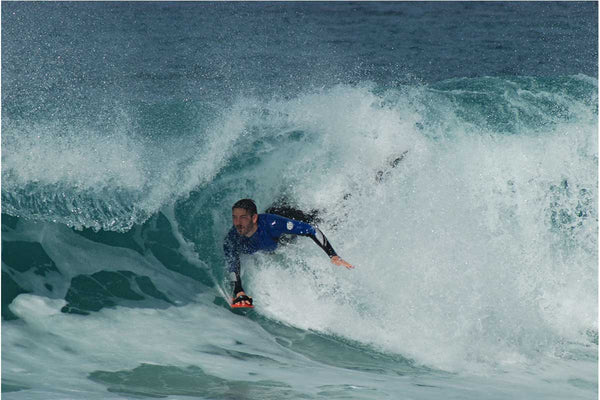
Corbin Brown
For the more experienced bodysurfer or long time board surfer, knowing how to choose the right wave becomes second nature. For the novice; dedication, patience, observation and practice are the only way to learn. The best bodysurfing waves are the steepest and hollowest waves. The bigger the wave the more momentum you need to catch the wave so fins are necessary. The techniques for catching a wave are numerous but three techniques are commonly practiced:
The Overhand Forward Stroke
The Under Water Takeoff
The Backstroke and Roll
The Overhand Forward Stroke is prettily self explanatory. It's basically a free style swimming stroke toward the beach. The bodysurfer will swim toward the beach to try and match the speed of the advancing wave swell. As you swim with the wave you can feel yourself being pulled along with the energy of the wave. The wave will steepen and slow somewhat as it approaches the shore; your momentum will now match or exceed the wave's speed and you will be propelled forward. It is at this point that you begin to slide down the wave face. The beginner or intermediate bodysurfer will most likely just slide straight at a right angle to the beach along with the wave.
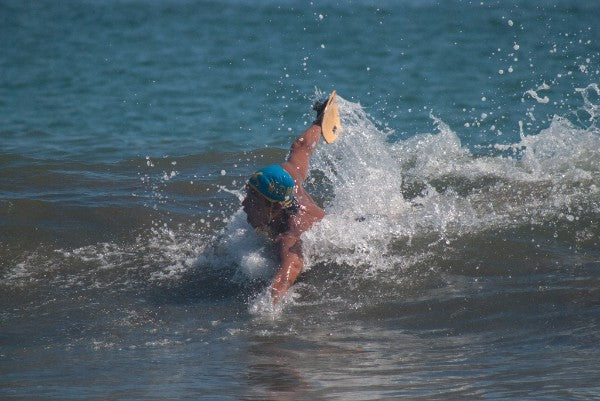
Overhand stroke -Jin Salamack
The more experienced bodysurfer will learn to angle him or herself slightly depending on the angle of the approach of the breaking wave, and either swim a little to the left or a little to the right just before he or she starts sliding down the face of the wave. By holding one arm and hand extended over the head and rolling slightly onto the back of the arm, shoulder and hip the bodysurfer can then slide parallel to the beach on the shoulder of the wave. This how long rides are achieved. The perfect bodysurfing position is to be sliding with the back of your arm, shoulder and hip in contact with the wave face. The idea is to maximise waterline length and it's much easier to keep your body straight and true while slightly on your side and back. Also, it keeps your face out of the water so you can see and breath! It may seem counter intuitive, but it works.
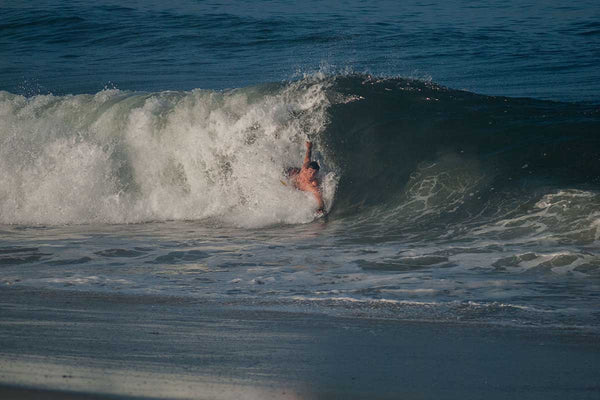
Layback form, angling toward the beach -Jesse Cabral
The Backstroke and Roll technique has the advantage of putting the bodysurfer in perfect position to slide parallel to the beach for long rides. For this technique the bodysurfer waits for a wave to get close then kicks with his or her fins and with a couple of over head back strokes with the hands, heads toward the shore. Once he matches the speed of the wave, the bodysurfer rolls onto his side with an out-stretched leading arm and drops into the wave. Just like that he is in perfect form and sliding parallel to the beach. Because you will be blind in the direction you are headed when you begin your ride, this technique is a little more dangerous than the forward stoke technique.
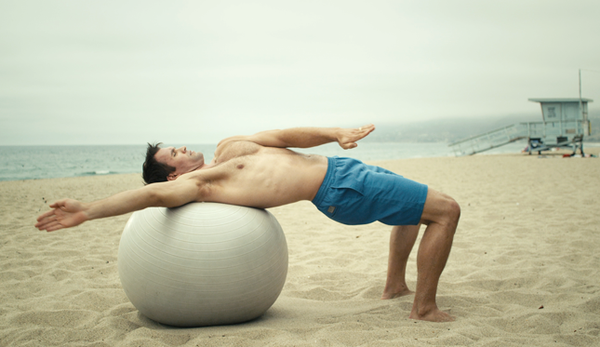
From this position a simple roll to the side puts you in perfect bodysurfing posture -The Backstroke. photo: furthermore.equinox.com
The most powerful and difficult of all the take-off techniques is the Underwater Takeoff, and it is also the most beautiful. Generally reserved for bodysurfing without a hand plane this technique can still be used with a plane. It requires you to hold your breath and open your eyes under water (if you want to see where you are headed). Float facing away from the beach and watch for your wave.

Photo: Mark Tipple-Solent News
When the wave gets a few feet from you sink yourself underwater and turn toward the beach stomach down. Flutter kick to gain a little momentum. With one or both arms outstretched in front of you feel the pull of the wave, and with one big sweep of the arms pull them to the sides of your body. With both feet together begin your dolphin style mono kick. To be effective this is done all in one motion and it will take practice.
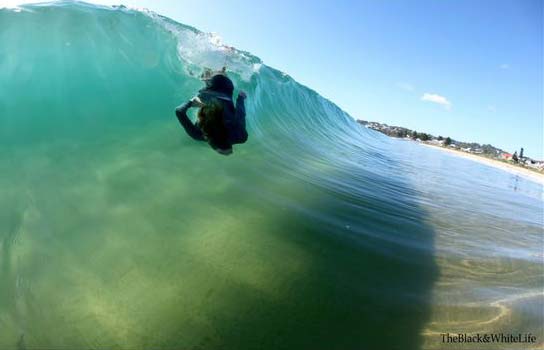
Gliding underwater, being pulled by the wave
Your arms and hands are held at your side. Use your entire body in unison in an undulating motion to propel yourself forward. Imagine yourself as a dolphin as you match the speed of the wave while under water. Just relax, face down, don't arch your back or neck. As the wave slows on its last moments of unrestricted advance to the beach, you will be sucked forward and through the water's surface just ahead of the wave's crest.

Arms extended, feeling the wave energy
Some find it easiest to start with arms forward in a streamline position and begin right away doing the dolphin kick. Once they are about to pop out of the face of the wave, they do a butterfly stroke and turn to their side in the direction they want to go. You have to know before you begin your underwater start which direction is the best way to go.

Just about to burst through the water's surface!
You can clear your eyes out once your head pops pops out of the water. Now slide! Arms at your side, chest first along the wave face. If you have a handplane extend your leading hand to make contact with the wave face for more lift and control.
Follow this link to learn more about wave anatomy, rip currents and some basic surfing rules.





The Sole Collective
Author